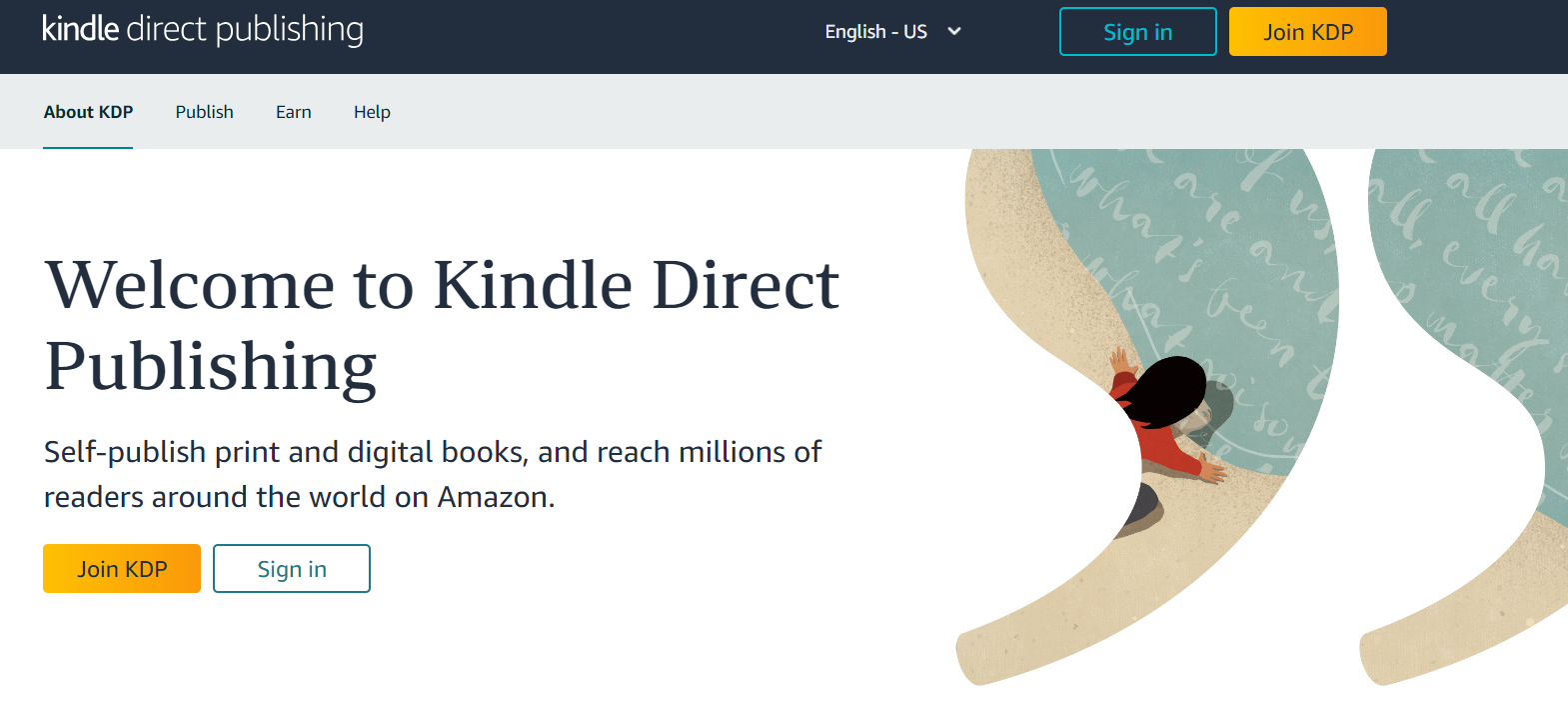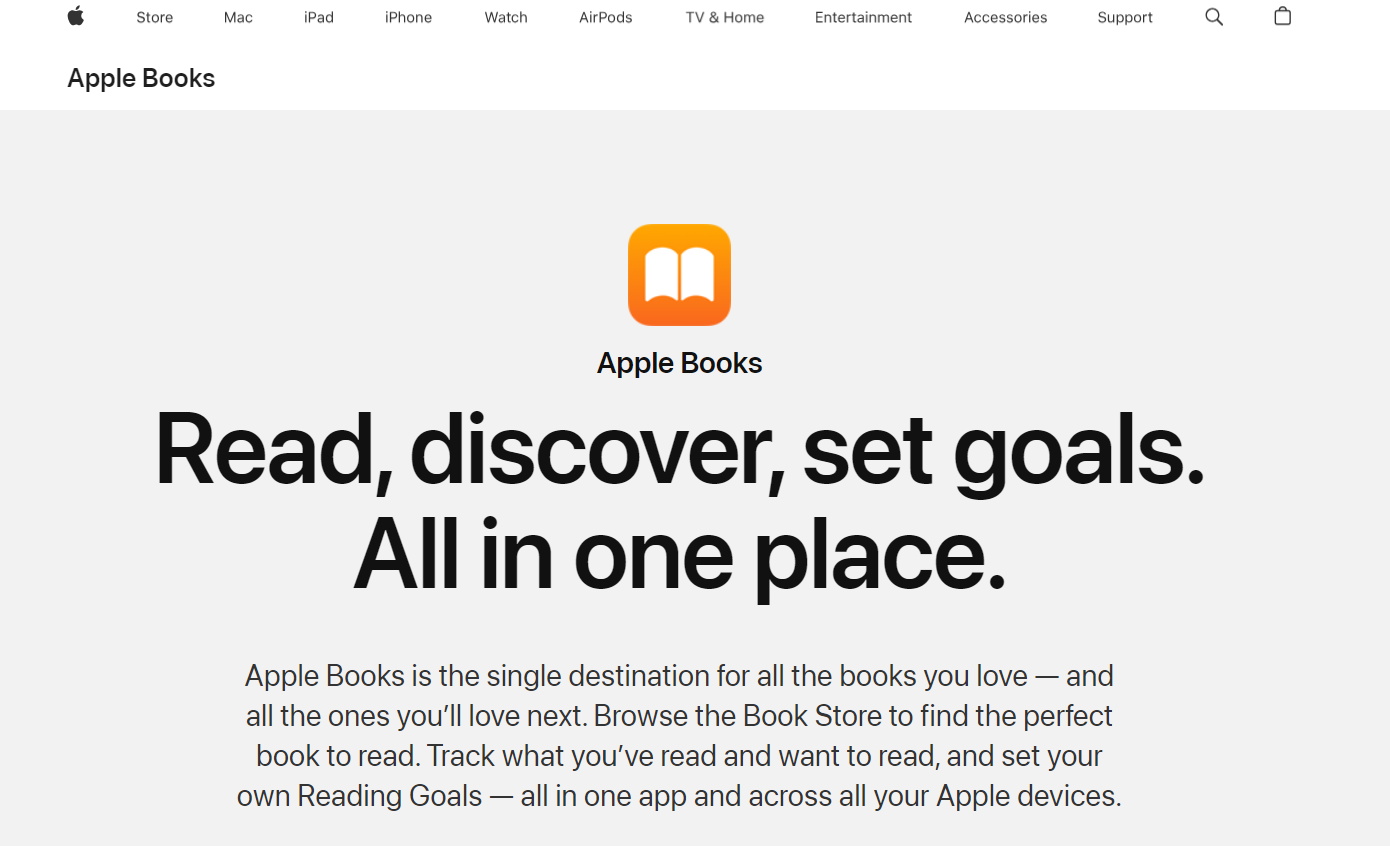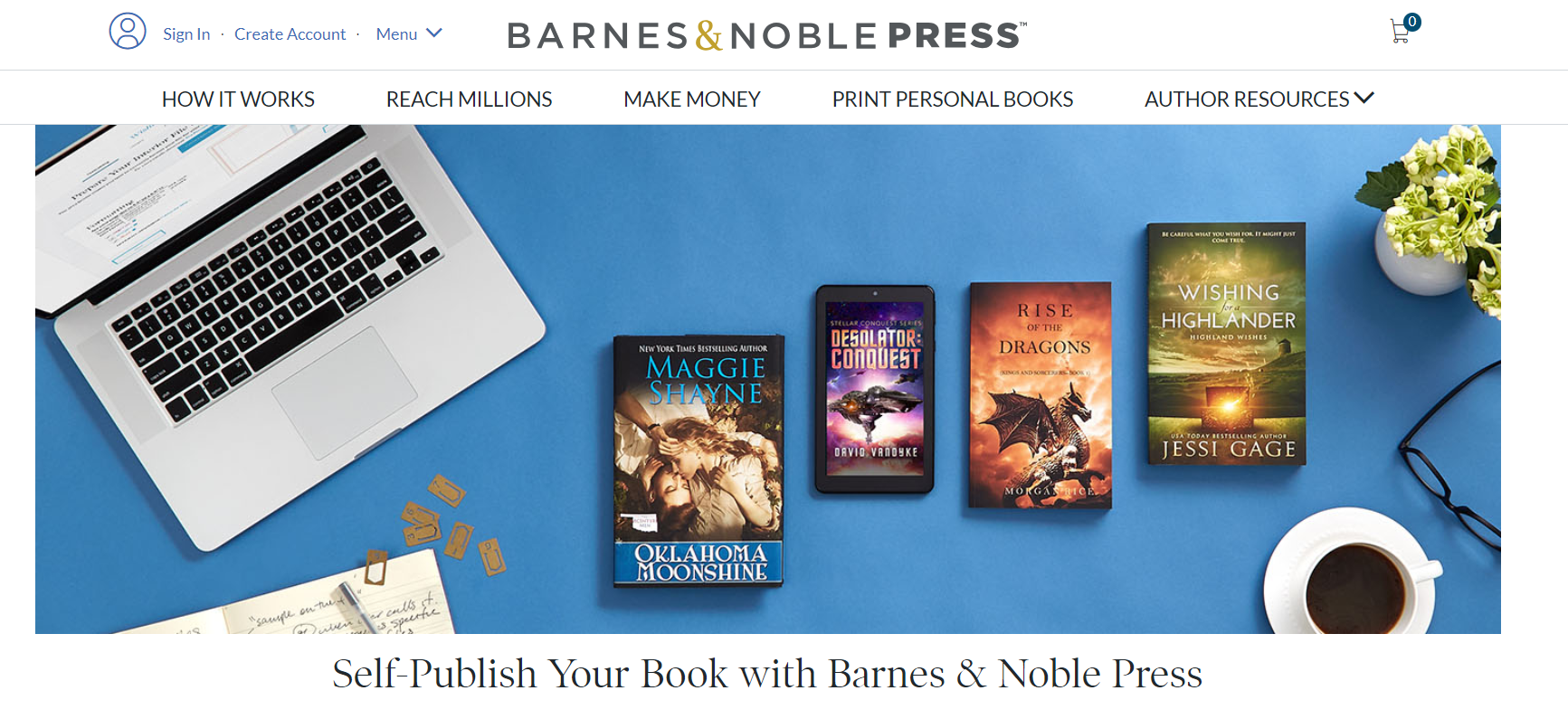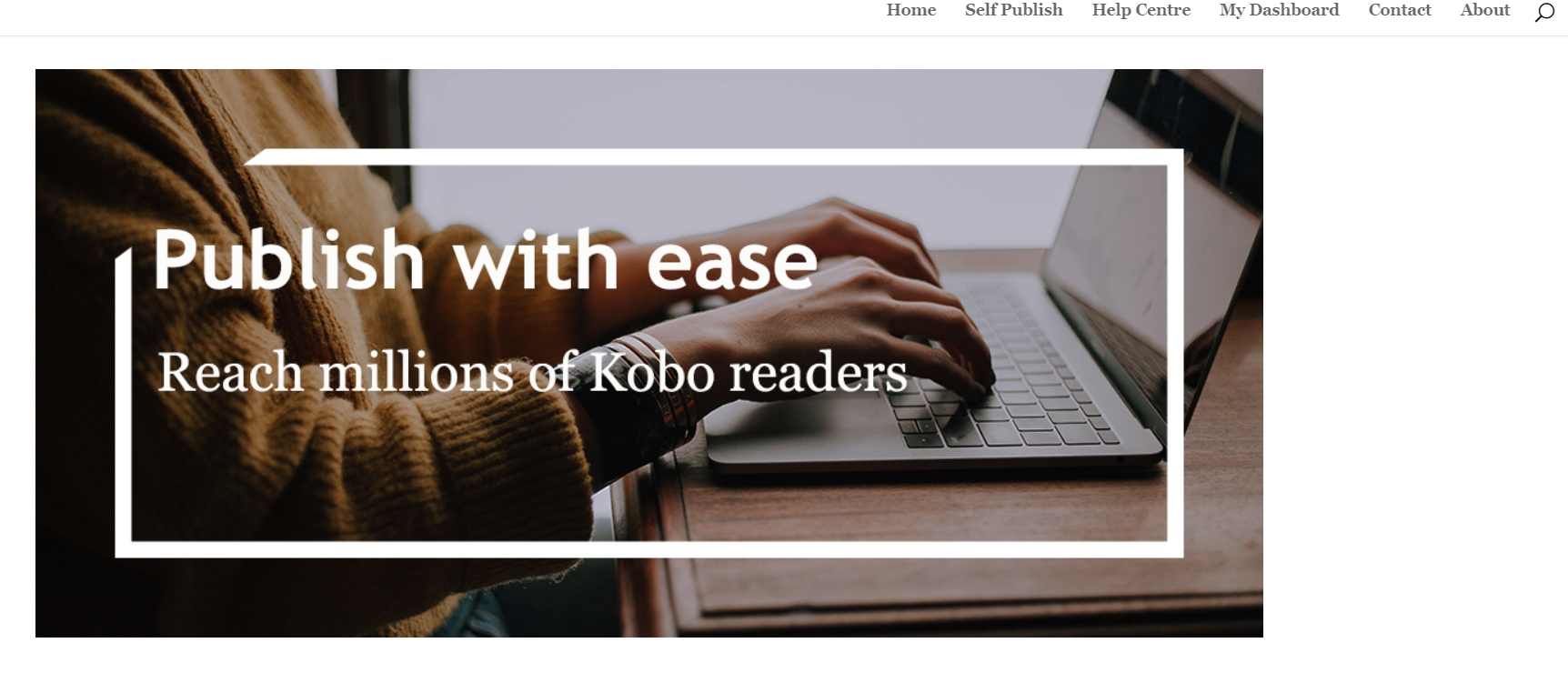In the ever-evolving digital landscape, self-published authors have more opportunities to reach global audiences with their eBooks. Whether you’re a seasoned author or just starting, choosing the right platform to sell your eBooks is crucial to your success. This article explores the 10 best places to sell eBooks online in 2024, examining each platform’s unique features, advantages, and potential drawbacks. Understanding these options lets you choose the best places to sell eBooks and maximize your reach and earnings.
Furthermore, leveraging the right platform can provide essential marketing, distribution, and analytics tools to boost your book’s visibility. Each platform’s community and support network also play a significant role in helping authors navigate the self-publishing journey. Ultimately, the goal is to find a platform that aligns with your needs and enables you to achieve your publishing goals.

Amazon Kindle Direct Publishing (KDP) remains the premier choice for self-published authors seeking a platform that combines extensive reach, robust support, and user-friendly features. Launched by Amazon, KDP allows authors to publish and distribute their eBooks and paperbacks to a global audience. The platform’s seamless integration with Amazon’s vast marketplace ensures that books can reach millions of potential readers, making it an attractive option for new and experienced authors.
Features:
- Royalties: Authors can earn up to 70% royalties on eBooks priced between $2.99 and $9.99. For books priced outside this range, the royalty rate is 35%. This flexible royalty structure allows authors to maximize their earnings based on their pricing strategy.
- Global Distribution: KDP ensures that books are available to millions of readers worldwide. Authors can enroll their books in programs like Kindle Unlimited and the Kindle Owners’ Lending Library, offering additional avenues for exposure and readership.
- Marketing Tools: KDP provides promotional tools to help authors market their books effectively. These include Kindle Countdown Deals, which offer time-limited discounts, and Free Book Promotions, allowing authors to offer their books for free for a limited time to boost visibility and readership.
- Ease of Use: The KDP platform is designed to be user-friendly, with a straightforward process for uploading manuscripts, cover designs, and book descriptions. This simplicity enables authors to publish their work quickly and efficiently without needing advanced technical skills.
Drawbacks:
- Exclusivity Requirements: Authors must enroll their books in the KDP Select program to take advantage of the higher royalty options and participate in certain promotional programs. This requires exclusivity, meaning the eBook cannot be sold on other platforms during enrollment. This limitation can restrict authors from reaching audiences on other eBook retail sites.

Apple Books capitalizes on the immense popularity of iOS devices, providing a seamless and integrated experience for both authors and readers within the Apple ecosystem. The platform is designed to leverage Apple’s reputation for high-quality products and services, offering a sophisticated and intuitive interface for publishing and consuming eBooks. This integration makes it a compelling option for authors aiming to reach millions of Apple device users globally.
Features:
- Royalties: Authors earn 70% royalties on all sales without any exclusivity requirements, providing a straightforward and lucrative earning potential.
- Interactive Content: The platform supports enhanced multimedia capabilities, making it ideal for educational eBooks and interactive content that can include videos, animations, and other engaging elements.
- Global Reach: Apple Books offers access to millions of Apple device users worldwide, ensuring a broad and diverse audience.
- Marketing Support: Authors can use promotional opportunities within the Apple Books store, increasing their visibility and sales potential.
Drawbacks:
- Complex Formatting: Publishing on Apple Books requires adherence to specific formatting guidelines, which can be more complex and time-consuming than other platforms.

Barnes & Noble Press has a significant presence in the eBook and print-on-demand markets, particularly within the United States. As a division of the renowned bookseller, Barnes & Noble Press allows authors to publish and distribute their books across digital and physical formats, leveraging the brand’s established reputation and customer base.
Features:
- Royalties: Authors can earn up to 65% royalties on eBooks, offering a competitive earning potential.
- Print Options: The platform allows authors to create print-on-demand paperback and hardcover books, expanding their reach to readers who prefer physical copies.
- In-Store Promotion: There is potential for in-store promotions and book signings, providing additional marketing and sales opportunities.
- Nook Devices: Authors can directly access Nook users, Barnes & Noble’s proprietary eReader platform.
Drawbacks:
- Limited Global Reach: The platform focuses more on the US market, with less international distribution than Amazon or Apple.

Kobo Writing Life is known for its international focus, allowing authors to reach a broad global audience. The platform partners with local retailers worldwide, making it an excellent choice for authors looking to expand their reach beyond English-speaking markets.
Features:
- Royalties: Authors can earn up to 70% for eBooks priced $2.99 and above, providing a competitive royalty structure.
- Wide Distribution: Kobo’s partnerships with local retailers enhance its reach in non-English speaking markets, making it a strong option for international distribution.
- Flexible Pricing: Authors can set prices in different currencies, allowing for targeted pricing strategies in various regions.
- Author Dashboard: The platform offers detailed analytics and promotional tools, helping authors track sales and optimize their marketing efforts.
Drawbacks:
- Smaller Market Share: Despite its strong international presence, Kobo has a smaller market share than Amazon and Apple in major markets like the US.
5. Google Play Books
Google Play Books integrates seamlessly with the Google ecosystem, offering authors broad visibility and advanced analytics. The platform’s extensive reach through Google’s global infrastructure makes it an appealing choice for authors looking to maximize their book’s exposure.
Features:
- Royalties: Authors can earn up to 70% royalties, providing a competitive earning potential.
- Global Reach: Google Play Books offers readers access through Google’s extensive global platform, ensuring a wide distribution.
- Dynamic Pricing: The platform provides flexibility to change prices and offer discounts, allowing authors to experiment with different pricing strategies.
- Analytics: Authors can access detailed insights into sales and reader behavior, helping them make informed decisions about their marketing and sales strategies.
Drawbacks:
- Complex Interface: The publishing interface can be less intuitive than other platforms, potentially challenging some authors.
6. Smashwords
Smashwords is renowned for its comprehensive distribution network and robust support, making it a favorite among indie authors. The platform’s broad reach through partnerships with major retailers and libraries ensures that books are available to a broad audience.
Features:
- Royalties: Authors can earn up to 85% on sales through the Smashwords Store, offering one of the highest royalty rates in the industry.
- Wide Distribution: Smashwords’ partnerships with major retailers like Apple Books, Barnes & Noble, and Kobo, as well as libraries, provide extensive distribution opportunities.
- Free Tools: The platform offers free eBook conversion and formatting services, simplifying the publishing process for authors.
- Marketing Opportunities: Authors can participate in site-wide sales and promotions, increasing their book’s visibility and sales potential.
Drawbacks:
- Less Direct Control: Authors have less control over individual retailer pricing and promotions, as Smashwords manages these aspects on their behalf.
7. Draft2Digital
Draft2Digital simplifies the self-publishing process with extensive distribution and author-friendly tools. The platform’s focus on ease of use and comprehensive support makes it an attractive option for authors looking to streamline their publishing experience.
Features:
- Royalties: Authors can earn up to 90% of net sales, providing a high earning potential.
- Distribution: Draft2Digital offers wide distribution to major eBook retailers and library systems, ensuring a broad reach.
- Formatting: The platform provides free, easy-to-use formatting tools, helping authors prepare their manuscripts for publication.
- Author Dashboard: Authors can access detailed sales tracking and automated backmatter updates, allowing them to manage their books effectively.
Drawbacks:
- Service Fees: Draft2Digital takes a small percentage of each sale for distribution services, which can impact overall earnings.
8. Payhip
Payhip empowers authors to sell directly to their readers, providing full control over sales and customer data. The platform’s customizable storefront and marketing tools make it an excellent choice for authors looking to build a direct relationship with their audience.
Features:
- Royalties: Authors keep 100% of sales minus a small transaction fee (5% + payment processing fees), offering a high earning potential.
- Customizable Storefront: Authors can create a branded online store, enhancing their personal brand and sales.
- Marketing Tools: Payhip integrates with social media, email, and affiliate marketing programs, helping authors reach a broader audience.
- Direct Interaction: Authors can engage directly with their audience, offering personalized promotions and updates.
Drawbacks:
- Self-Promotion Required: Success on Payhip heavily depends on the author’s ability to market their book independently, requiring a proactive approach to promotion.
9. Gumroad
Gumroad is ideal for authors who want to sell eBooks alongside other digital products. It provides a comprehensive sales platform. The platform’s flexibility and robust marketing features make it a versatile choice for authors with diverse product offerings.
Features:
- Royalties: Authors earn 95% on sales minus a small transaction fee, ensuring a high earning potential.
- Customizable Sales Pages: Authors can personalize their sales pages with videos, images, and product descriptions, creating an engaging shopping experience.
- Marketing Features: Gumroad offers tools for email marketing, social sharing, and customer segmentation, helping authors effectively promote their books.
- Analytics: The platform provides detailed insights into sales performance and customer behavior, allowing authors to make data-driven decisions.
Drawbacks:
- Platform Fees: Gumroad’s fees are higher than other platforms, especially for lower-priced items, which can impact profitability.
10. Etsy
Etsy, traditionally known for handmade and vintage goods, has expanded to include digital products, offering a unique marketplace for eBook sales. The platform’s niche market and built-in marketing tools make it an interesting option for authors with creative and unique products.
Features:
- Royalties: Authors earn 95% on sales, with listing and transaction fees, providing a competitive earning potential.
- Niche Market: Etsy offers access to a community of buyers interested in creative and unique products, creating a targeted audience for niche eBooks.
- Marketing Tools: The platform includes built-in SEO, promotional tools, and advertising options, helping authors increase their book’s visibility.
- Customization: Authors can create a personalized storefront, enhancing their brand and sales potential.
Drawbacks:
- Competition: High competition from other sellers and a marketplace not explicitly focused on eBooks can make it challenging for authors to stand out.
Conclusion
Choosing the right platform to sell your eBook online is vital in your publishing journey. From the extensive reach of Amazon Kindle Direct Publishing to the niche market of Etsy, each platform offers distinct advantages and challenges. You can effectively market your eBook and reach your target audience by leveraging these platforms’ unique features and tools. As you explore these options, consider your needs and goals to find the best fit for your self-publishing journey. With the right platform, you can maximize your sales and establish a successful presence in the eBook market.





